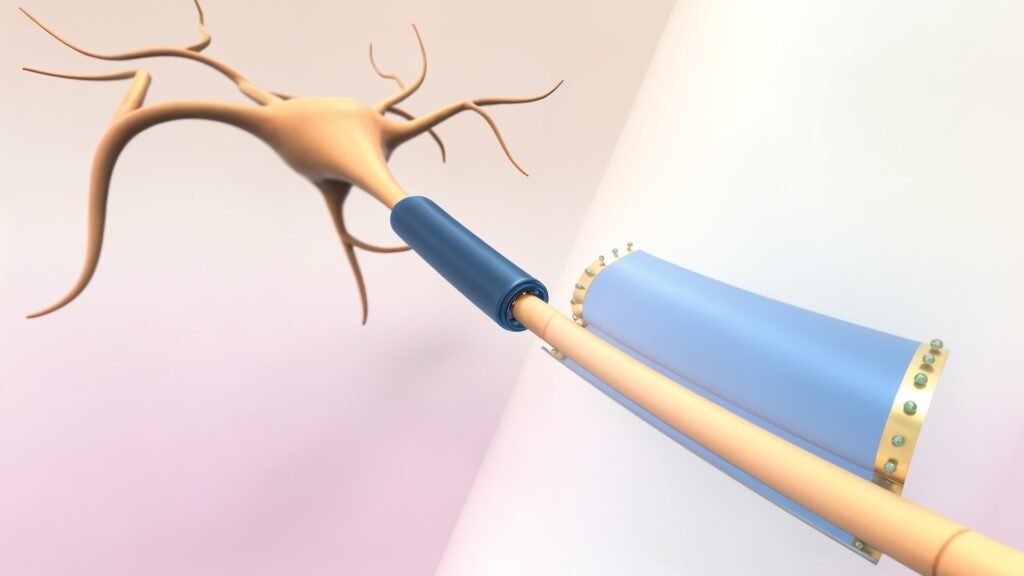Light-controlled wearables encase individual cells

Tiny wearables for cells: MIT researchers are developing microscopic devices that can wrap around neurons. These battery-free polymer wearables revolutionize the measurement and direct influence of cells and open up new avenues in bioelectronics.
Light nano wearables are revolutionizing cell research
A team of researchers at MIT has developed subcellular wearables made from a soft polymer called azobenzene. These microscopic devices can gently wrap around different parts of neurons without damaging them. The special feature: They are activated wirelessly by light, which enables precise control. By varying the light intensity and polarization as well as the shape of the device, the rolling direction and diameter can be precisely controlled.
The manufacturing process is surprisingly efficient. The researchers start with a water-soluble “sacrificial layer” to which they apply azobenzene. Thousands of tiny devices are formed using stamping technology. After curing and etching, the sacrificial layer dissolves, leaving the devices floating freely in a liquid. This method allows for mass production outside of a clean room.
In experiments they showed MIT researchers that the devices can wrap tightly around highly curved axons and dendrites of rat neurons without damaging them. “It is possible to control the diameter of the rolling very precisely. You can stop it when you reach a certain desired dimension by tuning the light energy accordingly,” explains Deblina Sarkar, senior author of the study published in Nature Communications Chemistry.
One promising application is its use as synthetic myelin in diseases such as multiple sclerosis, in which the axons’ natural myelin layer – a fatty insulating layer around nerve fibers that ensures fast and efficient signal transmission – is damaged. The wearables could serve as an insulator and thus improve signal transmission between neurons. In addition, the devices can be combined with photoelectric materials – substances that react to light and generate electrical signals and vice versa – which enables the integration of sensors and circuits.
Great potential
The technology is still in its early stages but shows great potential for the future of neuroscience and bioelectronics. Future research aims to modify the device surfaces so that they can target specific cell types or subcellular regions. This could pave the way for more precise and less invasive methods of studying and treating cells and neurons.
Research Snipers is currently covering all technology news including Google, Apple, Android, Xiaomi, Huawei, Samsung News, and More. Research Snipers has decade of experience in breaking technology news, covering latest trends in tech news, and recent developments.











